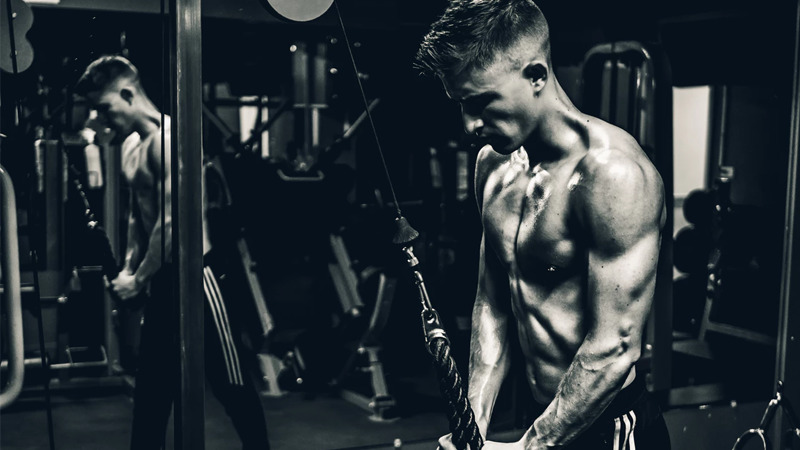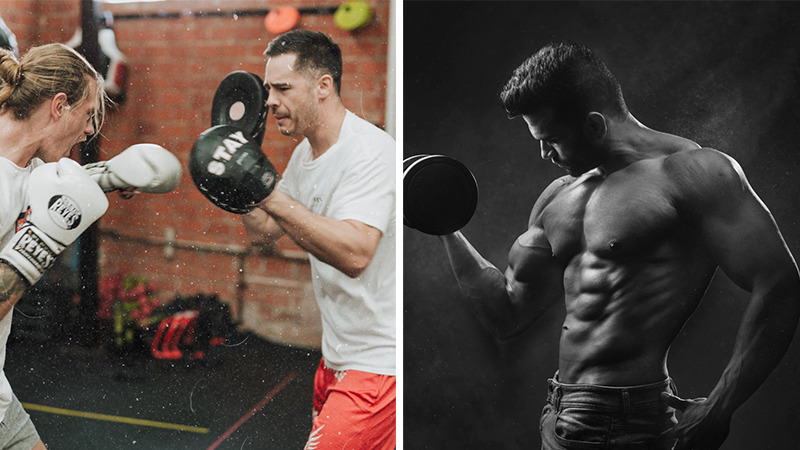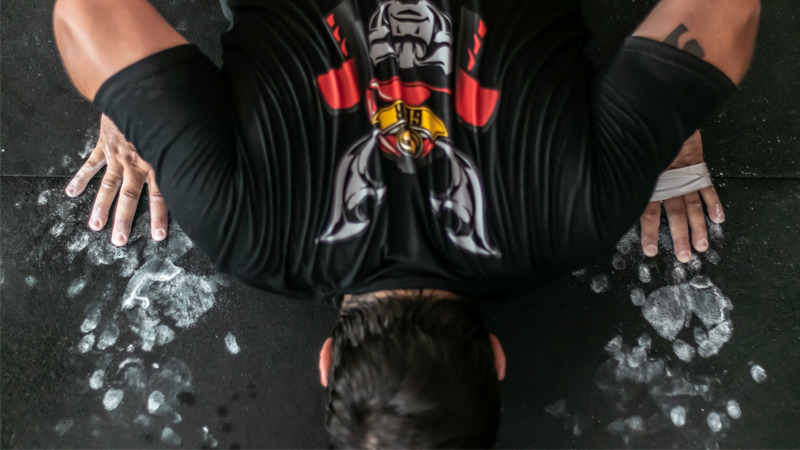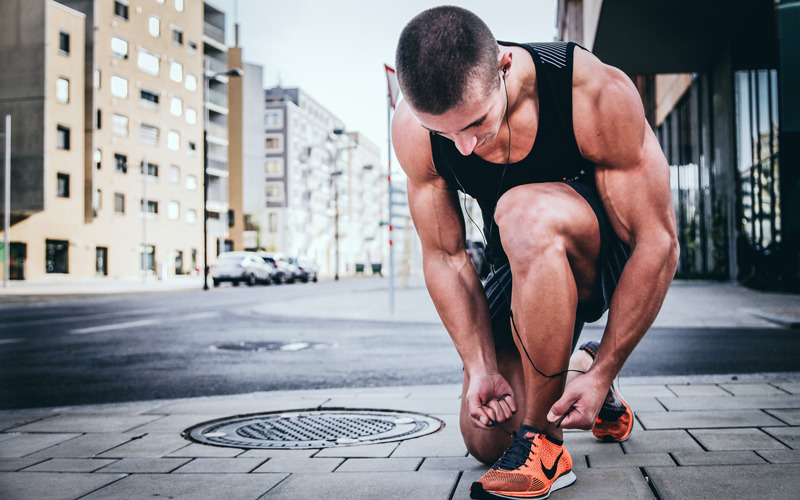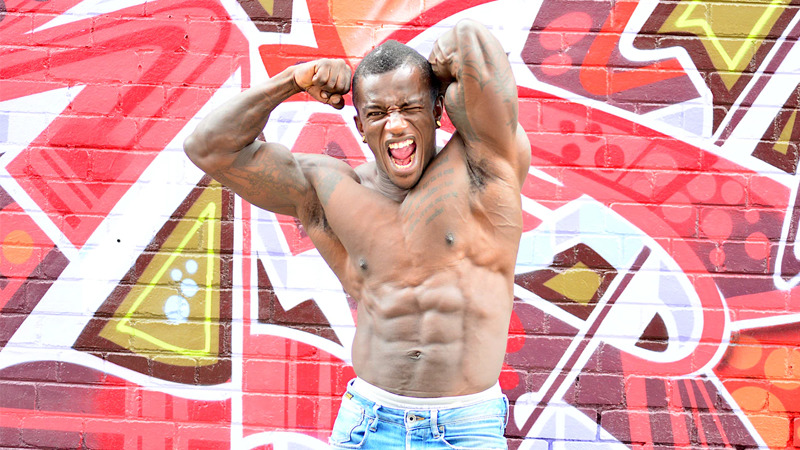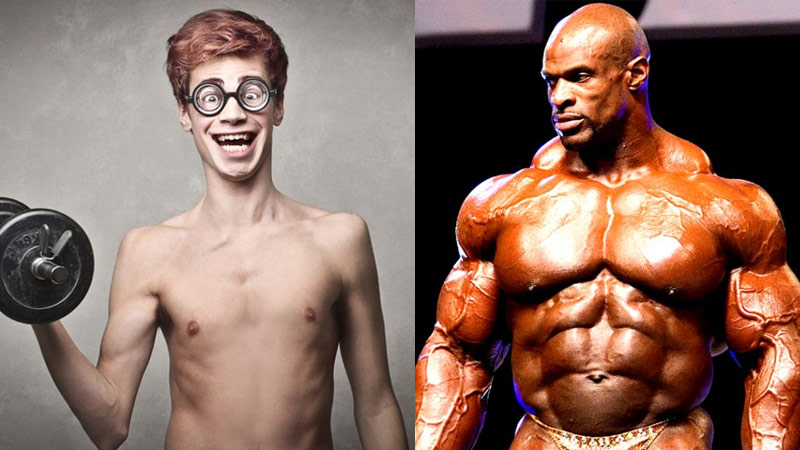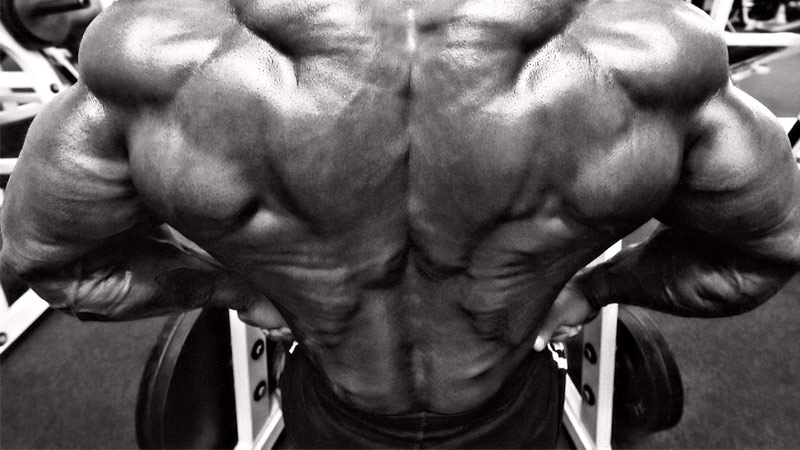
What are you doing to strengthen your lower back, bro? Whilst it’s not as glamorous as bulging biceps or popping pectorals it arguably more important. Without a strong lower back your body will crumble under big lifts, fold during athletic efforts, and open itself up to a preventable injury. So, stick these three essential exercises into your training today.
The big deal about lower backs
It doesn’t matter if you’re a bodybuilder, powerlifter, or general sports athlete. The bottom line is, our lower back is often the weakest link in a chain of high-performing muscles.
Believe it or not, this lumbar region plays a part in every movement we do. Every lift we pull, tackles we hit, or hills we sprint, all involve our lower back.
Simply put, these muscles act as a connection point between the top and lower half of our body. Sitting right at the top of the posterior chain, they keep your spine safely supported. Just imagine those spinal erectors working overtime during a heavy deadlift to keep us tight.
At this point, it should be clear we need to keep this area strong. A weak lower back leads to more complications than just an uneven physique, bro.
Eventually, we’re going to experience bouts of pain. This could be due to poor lifting form, muscular imbalances, or even just picking up a weight wrong. Everybody wants to end exhausting superset workout with a twinge, not! Cue two-weeks of gains-wrecking Netflix binges stuck on the couch.

Lower back pain in athletes
Pain in the lower back, known as lumbago, is common among athletes. At some point, you’ve most likely felt it yourself and know it’s hard to train around.
Get lumbago bad and you’re out of the game quicker than eating a Mike Tyson right hook. As the lumbar region is an integral area for a huge range of movements, almost everything affects it.
One way of fixing lower back pain is by bulletproofing the area with swole AF erector spinae. These are two thick muscles that run up either side of the spine.
Their job is to work with the anterior abdominal muscles to keep the spine straight. Consequently, by exposing them to safe challenges we can force them to adapt. As these muscles get stronger, they in turn become better at resisting pulling from other areas and injury.
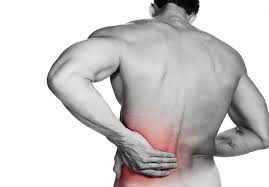
Benefits of a stronger low back
The benefits of a stronger lower back don’t just end at living a pain-free existence. In fact, some of the plus-sides of having spinal erectors like steel ropes might shock you.
Believe it or not bro, your lower back can determine your performance. Fix that lumbar up with lofty strength and you’re in for a world of gains.
Here’s what’s for the taking:
- Less low back pain or pain-free living
- Better weightlifting form
- Increased athletic performance
- Improved stability
- A stronger core – more efficient force transfer
- Gainz for dayz – train harder and for longer
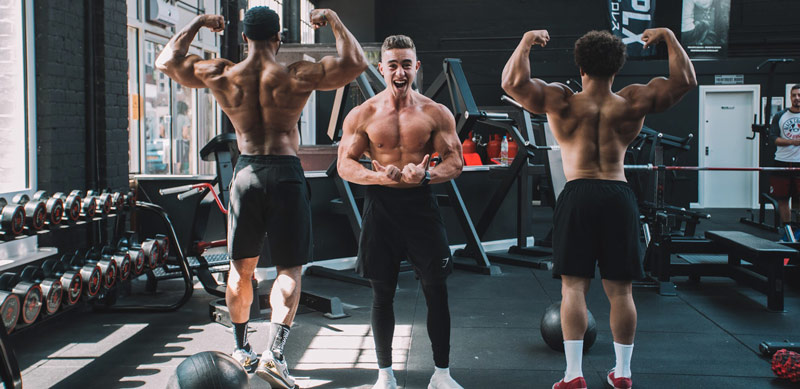
See, we told you it’s all good sh*t.
Your lower back is an integral part of your core muscles, which act as a trunk to your branching limbs. By strengthening your lumbar and overall core you’ll be able to hold better form in the weight room. Yup, that means bigger lifts on the chalkboard.
As an athlete, you’ll also deliver and endure impacts better. You’ll be able to support your spine enough to stay strong and overpower the opposition every time. Crumbling like a pencil-necked weakling when it matters most is for betas, bro.
Finally, think about force production. If you were to take a baseball bat to the face and then a foam squat pad, what’s gonna hurt the most? The damn bat, right? Because it doesn’t bend, the entire swinging force slams straight into your nose. When your spine can stay supported and rigid like this during a sprint or squat, little force is lost in the chain.
Use these three exercises for steely spinal erectors. Add them into your workouts to build a bulletproof lower back that’ll never let you down.
3 Essential Exercises for a Stronger Lower Back
Good Mornings
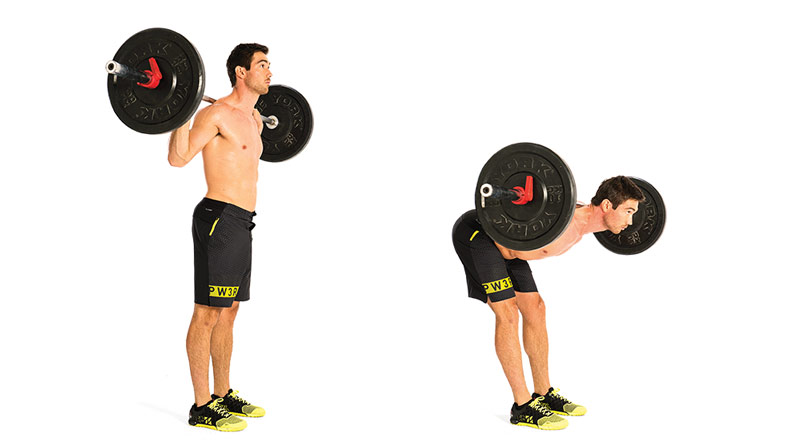
Good mornings are the single best exercise you’re not doing. They look like a fast track to the chiropractor but when done right are a beauty for the back. For a detailed good morning exercise guide click here.
Hitting this move will target the entire posterior chain. Whilst almost all compound lifts call upon the posterior chain it’s never a bad idea to train it. Make sure to perform your good morning as the first move of the workout when your lower back is at it’s freshest.
How to do it:
- Stand straight with feet hip-width apart
- Set a barbell across the delts just like a back squat. If you’ve already got a tight lumbar, hold the bar a little lower down your shoulder blades to relieve pressure
- Keeping knees slightly bent, break back into a hip hinge with a braced core
- Lower your torso toward the floor whilst keeping your spine aligned. Don’t pass horizontal or let your head pass your hips
- Reverse the position under control to the starting position
Deadlifts
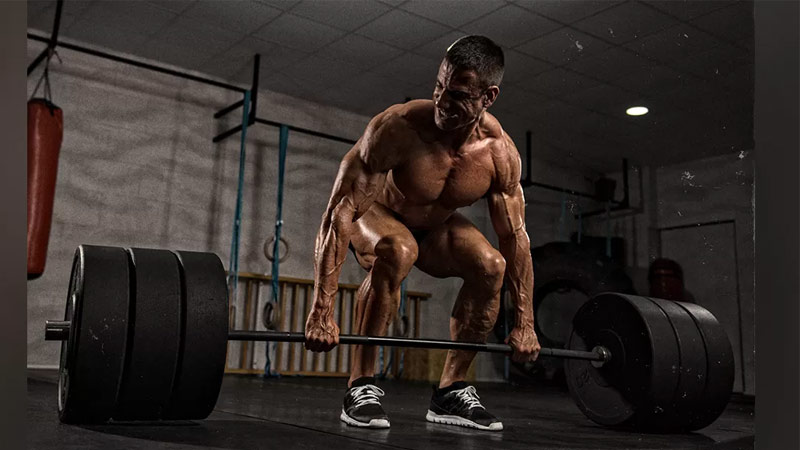
Again, a lot of dudes are gonna see the deadlifts on this lift and spit out their pre-workout. But, deadlifts are actually one of the best exercises to strengthen the erector spinae. All it takes is the right weight and smooth technique for guaranteed gainz.
It’s true that many people develop bad backs by doing this move wrong. They knowingly or ignorantly sacrifice tight form to rip the bar from the ground with too much load. Smashing sets like this puts serious strain on the lumbar region, so painful consequences are inevitable.
Do it right though and you’ll develop full body monster strength. Not only that, but high-intensity compound lifts crush calories and scorches fat like nothing else. You’ll get seriously shredded, bro.
Serious about fixing your form or a big-lift virgin? Check out this super detailed guide to deadlifting first.
Otherwise, follow the simple steps here to freshen up your technique.
How to do it:
- Stand with feet hip-width apart with your shoelaces under the bar
- Reach down with your arms extended outside your legs and grab the bar
- Hinge at the hips, break at the knee, straighten your back and lift your chest. This will be your starting position
- Draw an inwards breath and brace that core. Then, take the tension of the bar – listen for that ‘magic clink’
- Lift off! Push through the heels keeping your feet flat on the floor
- Open the hips as you pull the bar upwards in a straight line. Try not to ‘lift’ the load with your arms but your whole body as one unit
- Once you’re stood vertical, lock out the hips. Without hyperextending, squeeze the glutes and keep looking straight ahead
- When you’re ready, either drop the bar or lower it by reversing the hip hinge
Cable pull throughs
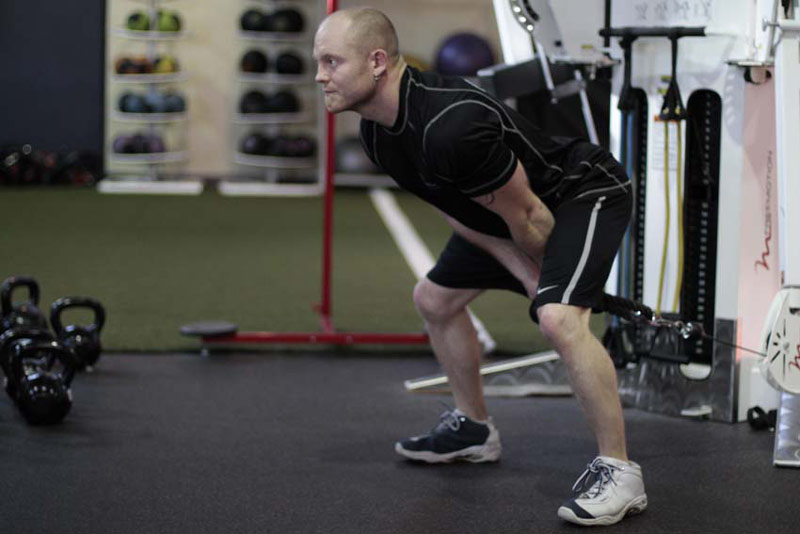
Cable pull throughs are another compound move that employs the hip hinge. They primarily target the lower body – specifically the hamstrings, glutes, and spinal erectors. However, hitting them regularly will strengthen your core too.
Also, our hip flexors can often shorten from sitting around all day. When this happens, they’re known to pull hard on the lumbar region causing a tight nagging pain.
Because cable pull throughs allow the hip flexors to fully extend, they’re awesome for fixing lower back pain. A double-whammy happens as the flexors receive a much-needed stretch and the lumbar region becomes stronger. Over time, this makes the lower back more resilient to any pulling.
How to do it:
- Attach a rope handle to a low cable pulley. Stand two-to-three feet in front of the machine, facing away from it
- Widen your stance so you can reach through and hold the rope handle between your thighs. There should be an equal distance between the right and left leg, a slight bend in the knees, and arms locked out straight
- Keeping your back straight and core braced, open the hips to pull the rope through. Ensure you’re only using your glutes to bring your posture upright
Final point – The last bit on lower back strength
Now you have the tools needed to bolster that lower back for good. But, there’s one important thing to note before smashing sets for your spine.
Because the lower back comes into play during pretty much every lift, it doesn’t need a separate workout. Doing so is an easy way to overtrain the area, as it’ll already be experiencing of volume throughout the week.
Instead, just try to implement these three exercises into an existing exercise program. You’ll most likely find a way to fit them into leg day or as part of a full body workout.
Finally, remember form is everything bro. Great posture and alignment will be rewarded with never-ending gains. As your back grows stronger so will the rest of your body until your lumbar is literally bulletproof.
Hungry for more muscle obsessed knowledge, bro? You might like:

